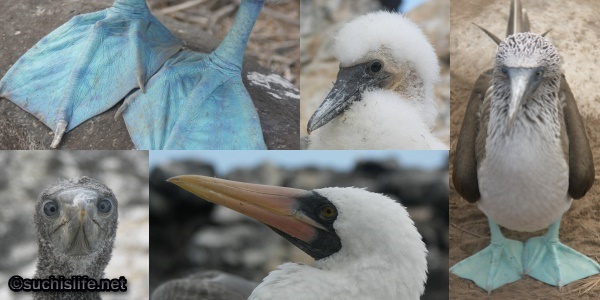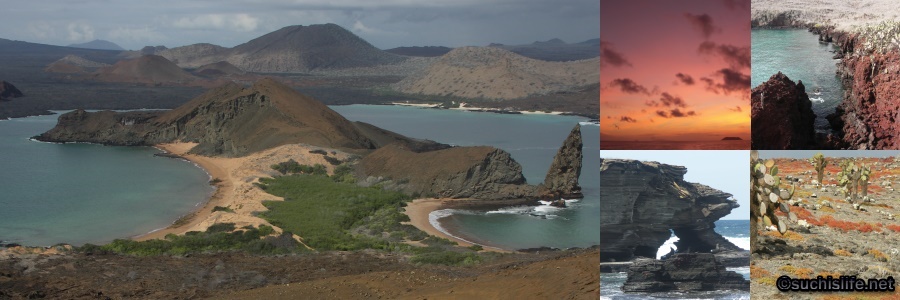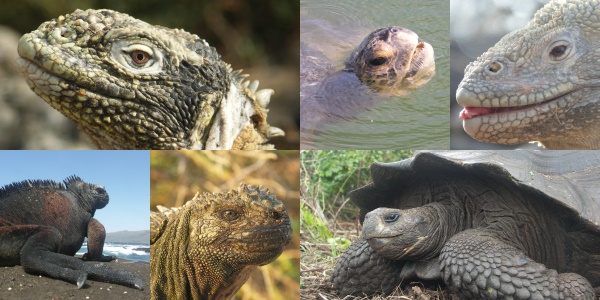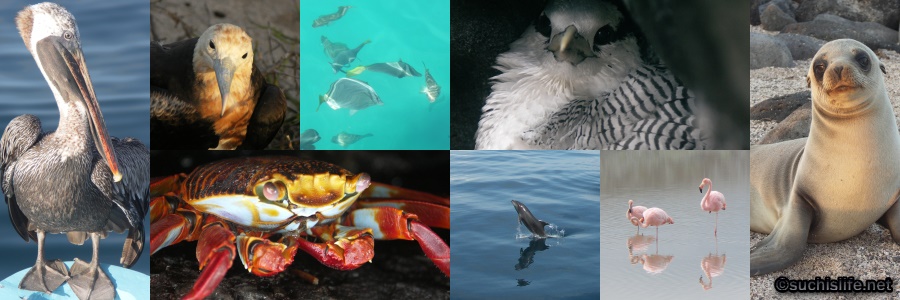Such is life
Crossing Latin-America

Islas Galápagos
|
|
Easy question:
Why do blue footed boobies do have blue feet?
- Easy answer: Why not?
|
|||
|
Each of the 10 visited islands has its own character and its own kind of fauna. Within our
8 days trip, we have experienced such a lot of different impressions, that we and our 8
fellows could not handle more - It was just too much!
|
||||
|
|
||||
|
The name Galápagos derives from the spanish word for the giant land turtles, which
populated the islands in their tenthousands in the past. But also in the past crews of large ships
used the turtles as living provisions for their long journeys and almost exterminated them.
The Galápagos Islands are situated almost 1000km from the mainland of Ecuador in the
pacific ocean and were discovered by the bishop of Panama in 1535, who was on his way to Peru
but was displaced by strong currents. But they got popular many years later with the studies
of Charles Darwin, who visited the islands for only 5 weeks in 1835 and afterwards developed his
theory of evolution.
|
||||
|
We were especially impressed by the iguanas and the turtles, which we haven't seen before.
There are land and marine iguanas, which get their food from the ocean and are able to swim.
By the way: All iguanas are vegetarians and therefor unperilous. The land iguanas feed
cactuses, the marine iguanas feed algae, which grow in the ocean.
|
|
|||
|
There are hunderts of other species living above and below the oceans surface on the
Galápagos Islands. Under water we saw sharks, rays, peguines, delphins and not to
forget a lot of sealions, which where almost everywhere. Without having a underwater-camera
we got only some photos of fishes from the boat, but a lot of more pictures above the ocean.
Finally we almost took 1500 photos on the Galápagos Islands.
|
||||
|
|
||||
last update: Mar / 04 / 2006





